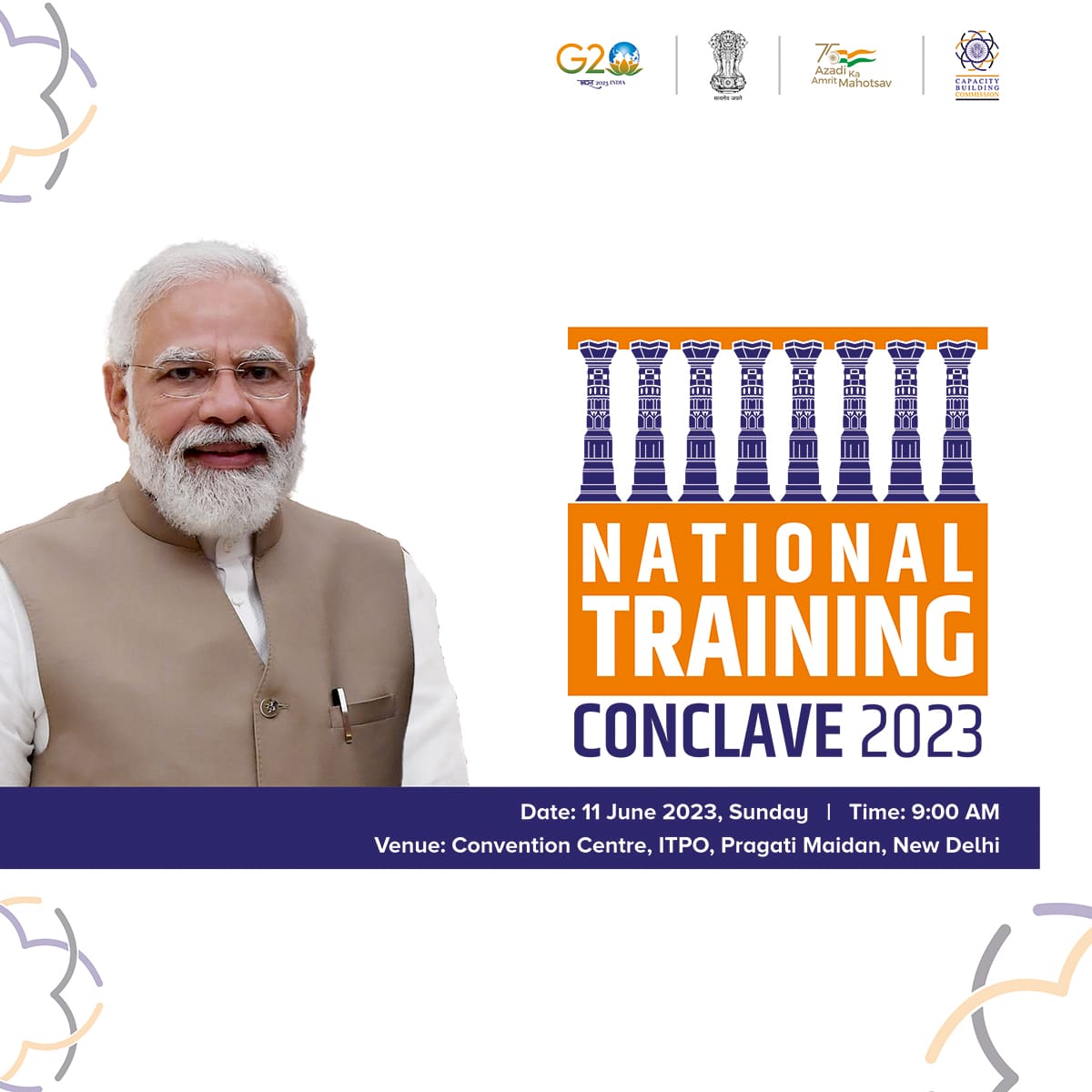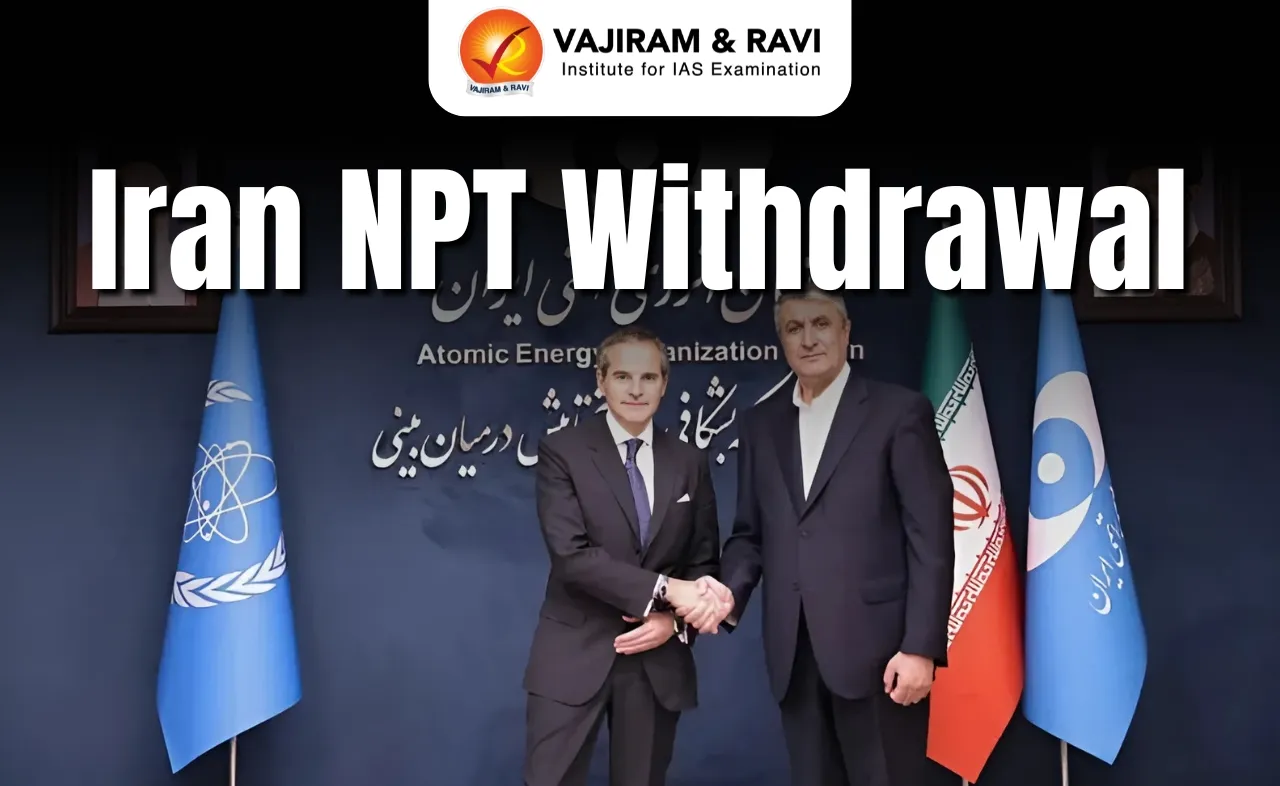What’s in today’s article?
- Why in News?
- News Summary
- About Mission Karmayogi
- Need For the Reforms In Civil Services
- Prime Minister’s Vision of Civil Servant-Karmayogi For the Nation
- Pillars of the Mission Karmayogi
- Salient Features of Mission Karmayogi
- Institutional Structure of Mission Karmayogi
- Mission Karmayogi Action Plan (2021-23)
Why in News?
- Prime Minister Narendra Modi inaugurated the first ‘National Training Conclave’ and highlighted the importance of capacity building, ending silos and enhancing service delivery.
News Summary
- Prime Minister Shri Narendra Modi inaugurated the first-ever National Training Conclave at the International Exhibition and Convention Centre, Pragati Maidan, New Delhi.
- He addressed more than 1,500 participants at the event drawn from training and research institutes across the country.
- An official statement said Prime Minister Narendra Modi has been a proponent of improving the governance process and policy implementation in the country through capacity building of civil service.
- As part of this vision, the National Programme for Civil Services Capacity Building (NPCSCB) – ‘Mission Karmayogi’ – was launched to prepare a future-ready civil service with the right attitude, skills and knowledge. This conclave is yet another step in this direction, it said.
- The event is being hosted by the Capacity Building Commission with an objective to foster collaboration among civil services training institutes and strengthen the training infrastructure for civil servants across the country.
About Mission Karmayogi
- Referred to as the biggest bureaucratic reform initiative of independent India, the Union government launched Mission Karmayogi in September, 2020.
- Objective: To transform capacity-building in the bureaucracy through institutional and process reforms.
- Mission Karmayogi is a scheme that exhorts the civil servant to maintain a very high standard of conduct and behaviour so that he earns the trust of the people and is emulated by his peers and subordinates.
Need For the Reforms In Civil Services
- Civil Servants play a vital role in formulating policy and executing delivery at the cutting edge.
- However, the current civil services capacity building landscape was marred with the following challenges:
- Existing training policy interventions were sporadic and largely confined to individual and intermittent innovations;
- Stereotyped working in silos or compartments, rather than an overall unifying vision and understanding of national priorities;
- Lack of a lifelong and continuous learning environment for all civil servants;
- Barriers to exchange of knowledge preventing collaborative working.
- Moving from a RULES-BASED to a ROLES-BASED HR management system.
Prime Minister’s Vision of Civil Servant-Karmayogi For the Nation
Image Caption: Qualities of a Civil Servant
Pillars of the Mission Karmayogi
Image Caption: Pillars of Mission Karmayogi
Salient Features of Mission Karmayogi
- The transition from Rules Based to Roles Based Human Resource (HR) Management – The focus is to allocate jobs to the civil servants based on their competencies.
- On-Site Learning to complement Off-Site Learning – It is a training given to the civil servants on-site.
- An ecosystem of shared training infrastructure – Civil servants to adapt to an ecosystem of shared learning materials, institutions and personnel.
- Framework of Roles, Activities and Competencies (FRACs) approach – All civil services positions to be calibrated under this approach. Also based on this approach, all learning content will be created and delivered to every single government entity.
- Behavioural, Functional and Domain Competencies – Civil Servants to build their competencies in their self-driven and mandated learning paths.
- Co-creation of the common ecosystem by all the Central Ministries, Departments and their organizations – This is a way to create an ecosystem of learning through an annual financial subscription for every employee.
- Partnership with learning content creators – Public training institutions, universities, start-tips and individual experts will be enabled to be a part of this capacity-building measure.
Institutional Structure of Mission Karmayogi
Image Caption: Structure of Mission Karmayogi
- PM’s HR Council is the apex body to provide strategic direction to capacity building reforms.
- Cabinet Secretariat Coordination Unit works to monitor progress and execution and overseas plans.
- Capacity Building Commission works to harmonize training standards, create shared faculty & resources and facilitate world class learning.
- Karmayogi Bharat SPV owns and operates the online platform iGOT-Karmayogi to facilitate world class learning.
Mission Karmayogi Action Plan (2021-23)
Image Caption: Mission Karmayogi Action Plan
Q1) Who was the first Indian national to clear Indian Civil Services examination?
Satyendranath Tagore was the first Indian who passed the Indian Civil Service Examination in June 1863.
Q2) Why Civil Servants are often called Steel Frame of India?
Sardar Vallabhbhai Patel, India’s first home minister, had called the IAS India’s steel frame, referring to the bureaucratic structure it was supposed to provide to hold up the new nation.
Last updated on June, 2025
→ UPSC Notification 2025 was released on 22nd January 2025.
→ UPSC Prelims Result 2025 is out now for the CSE held on 25 May 2025.
→ UPSC Prelims Question Paper 2025 and Unofficial Prelims Answer Key 2025 are available now.
→ UPSC Calendar 2026 is released on 15th May, 2025.
→ The UPSC Vacancy 2025 were released 1129, out of which 979 were for UPSC CSE and remaining 150 are for UPSC IFoS.
→ UPSC Mains 2025 will be conducted on 22nd August 2025.
→ UPSC Prelims 2026 will be conducted on 24th May, 2026 & UPSC Mains 2026 will be conducted on 21st August 2026.
→ The UPSC Selection Process is of 3 stages-Prelims, Mains and Interview.
→ UPSC Result 2024 is released with latest UPSC Marksheet 2024. Check Now!
→ UPSC Toppers List 2024 is released now. Shakti Dubey is UPSC AIR 1 2024 Topper.
→ Also check Best IAS Coaching in Delhi























